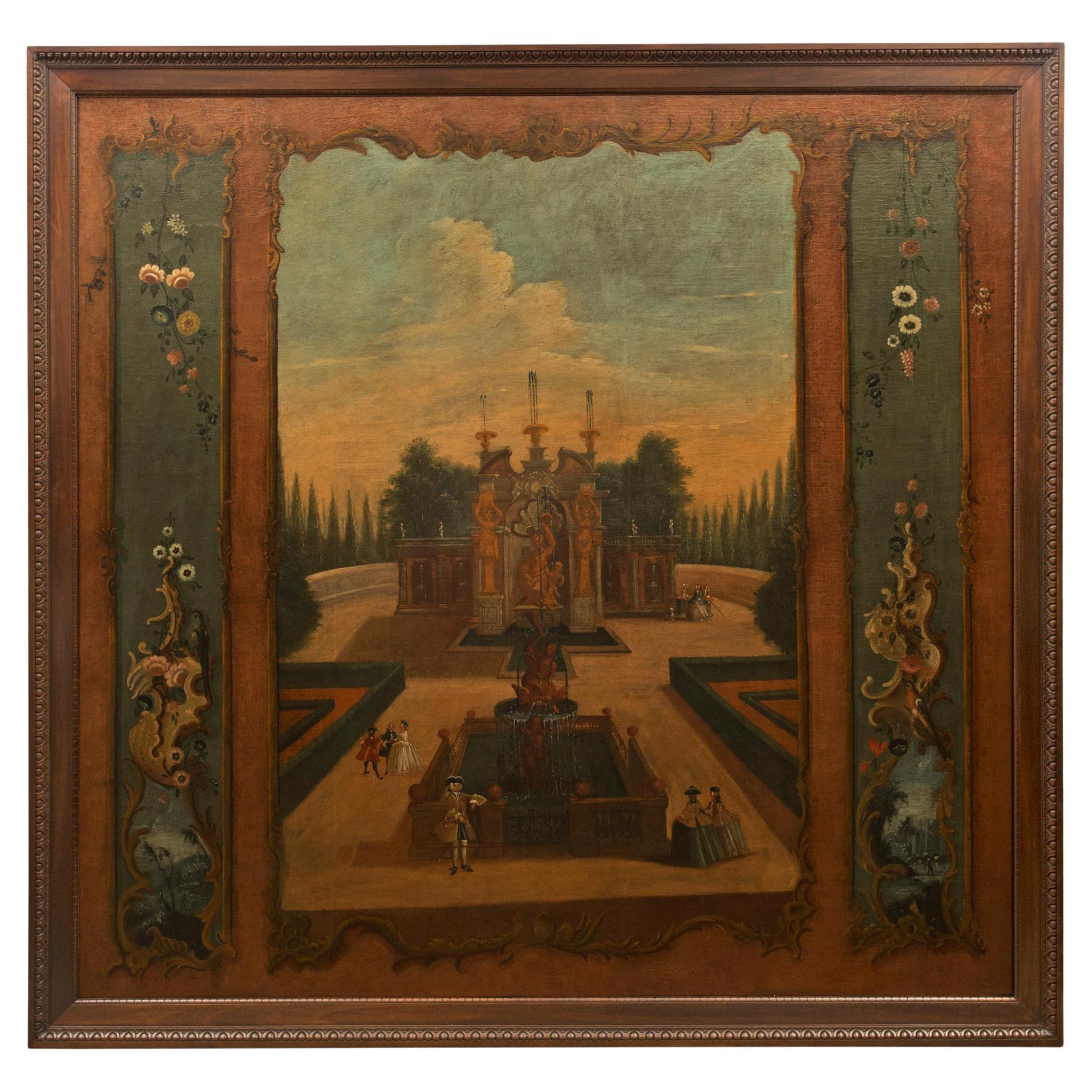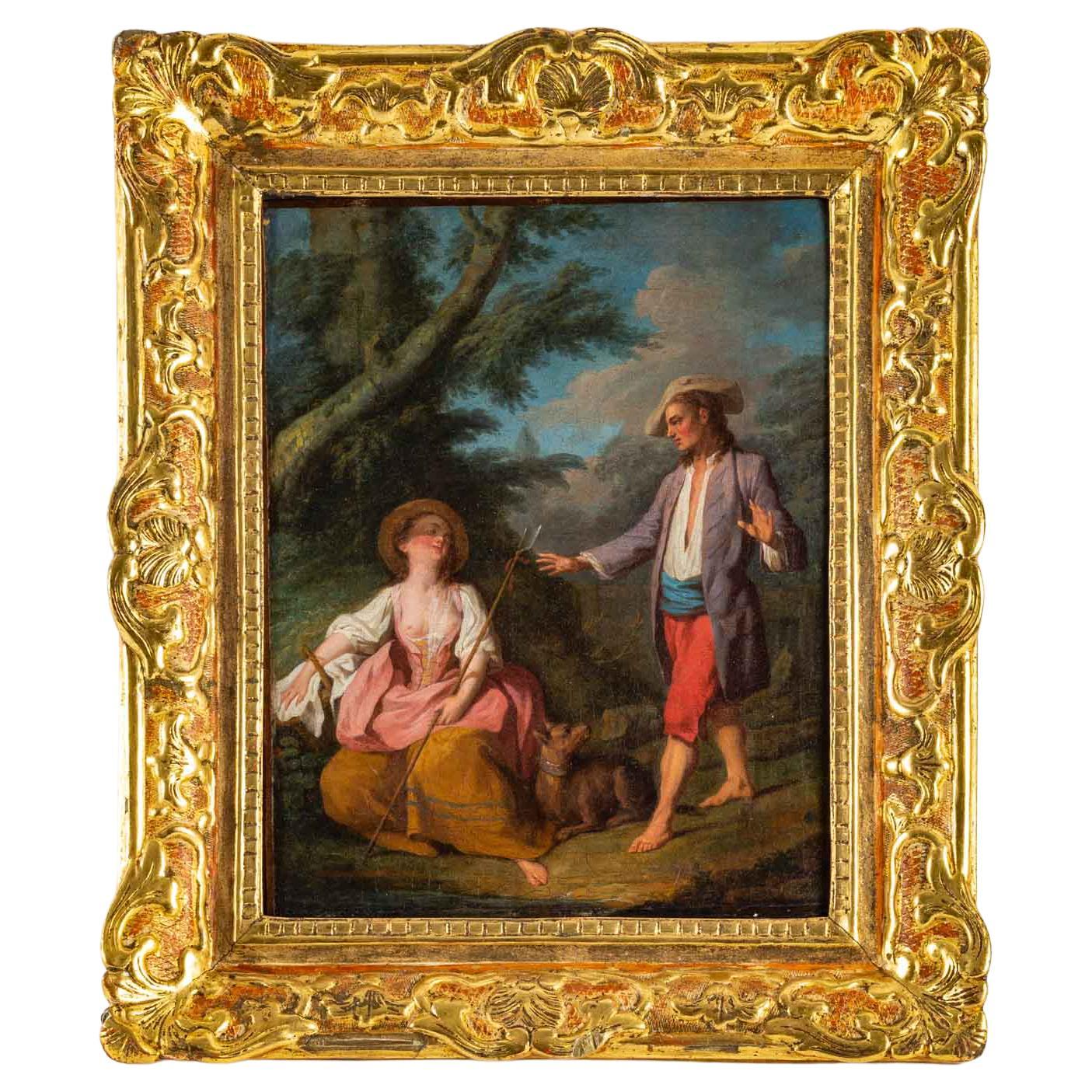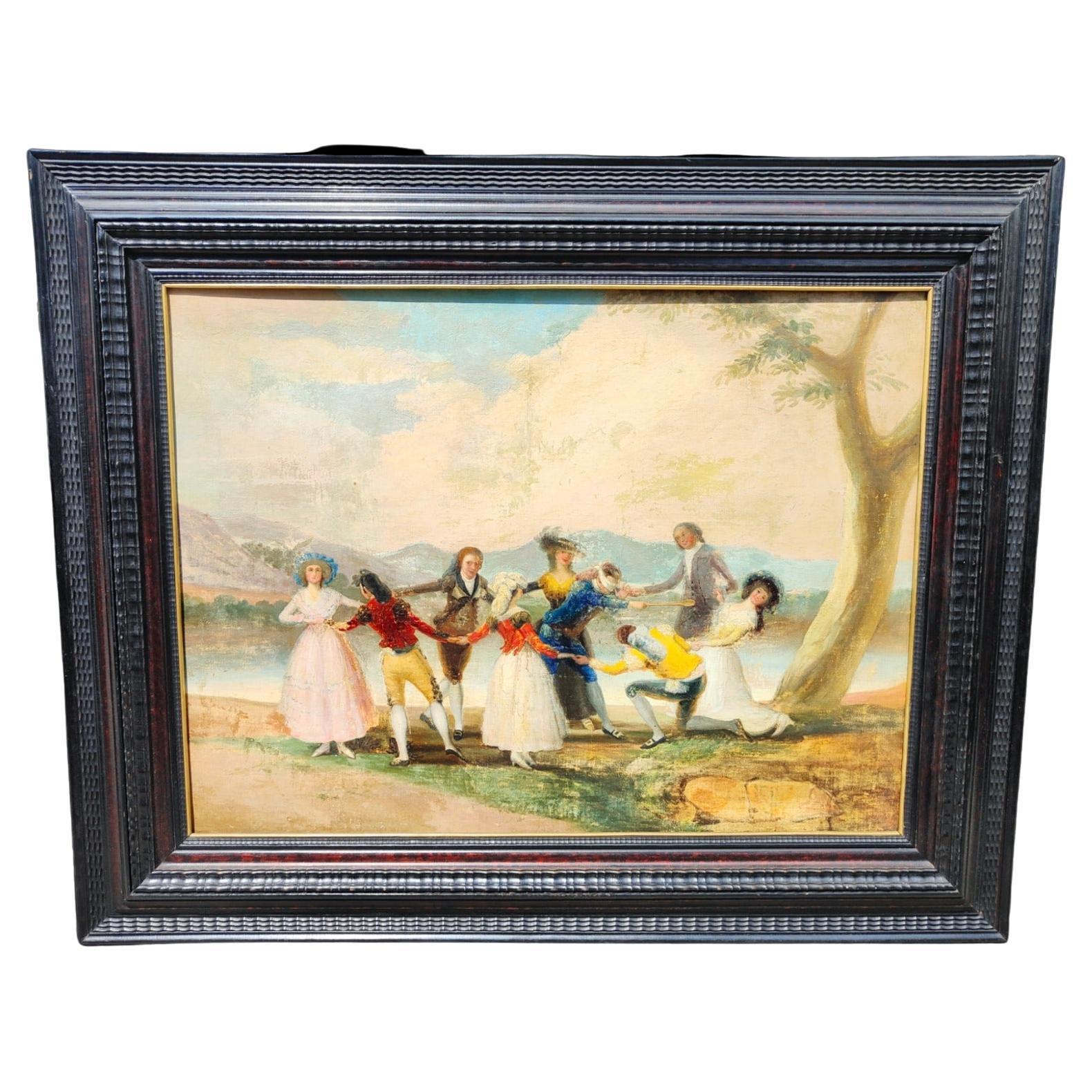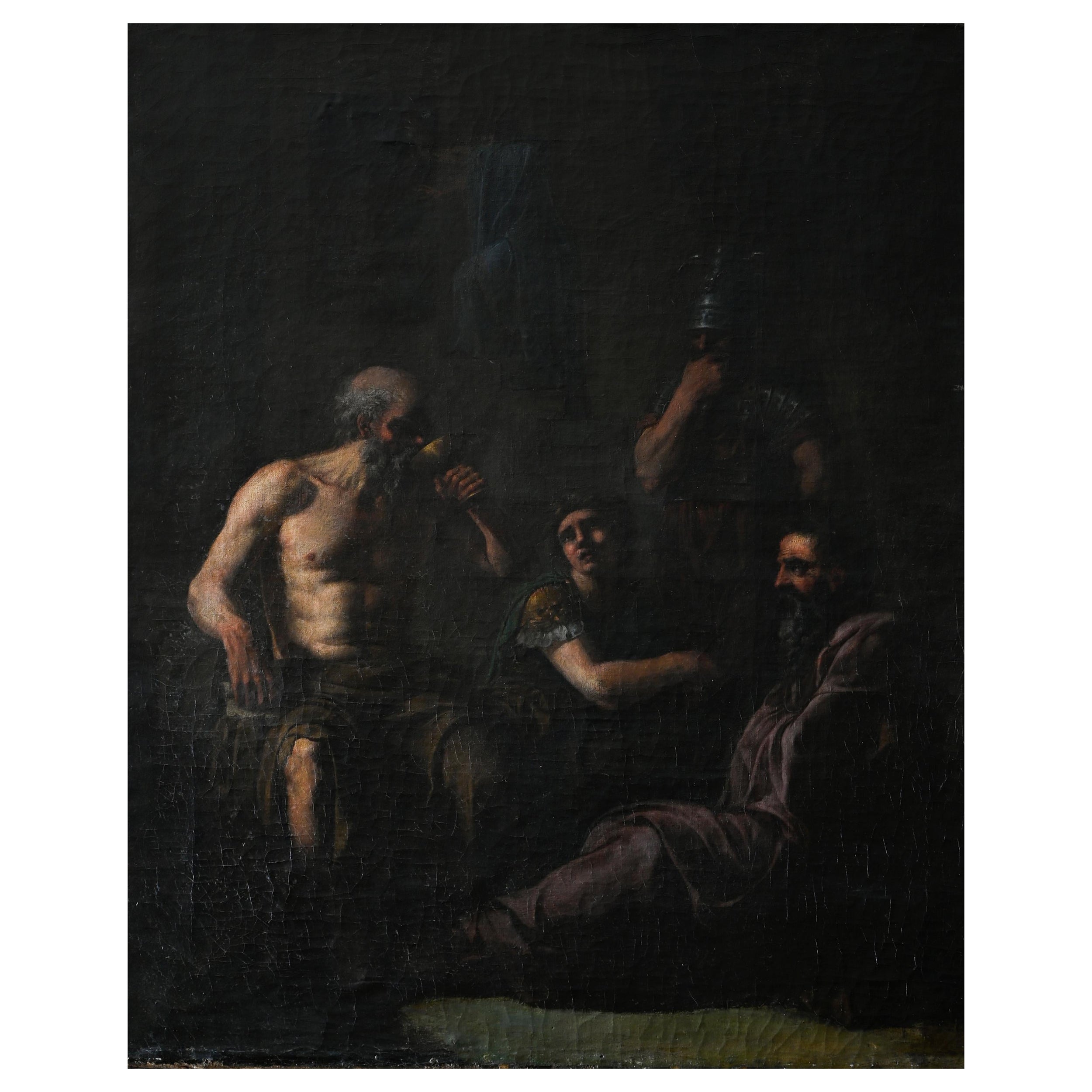Items Similar to 18th Century, Esther and Ahasuerus Oil Painting on Canvas
Want more images or videos?
Request additional images or videos from the seller
1 of 8
18th Century, Esther and Ahasuerus Oil Painting on Canvas
About the Item
Francesco Maria Raineri, known as Schivenoglia
(Schivenoglia, Mantua 1678-1758)
Esther and Ahasuerus
oil painting on canvas
Size: 52x137 cm
Work exhibited during the exhibition dedicated to the homonymous painter:
“Francesco Maria Raineri - Lo Schivenoglia 1676-1758, works from private collections”
and published in the catalogue, page 13.
Esther is the daughter of Abicàil of the tribe of Benjamin, one of the two tribes that made up the Kingdom of Judah before its destruction by the Babylonians and the deportation, in 597, of the kingdom's elite to the provinces of the Persian empire.
On the death of her parents she is adopted by her cousin Mordecai who occupies an administrative function in the royal palace in Susa. Having heard that King Ahasuerus is looking for a new bride, Mordecai has his cousin Esther take part in the selections. Esther is chosen and becomes the wife of Ahasuerus.
When the prime minister Haman decides to exterminate all the Jews in the kingdom, Mordecai, who has always watched over Esther, urges her to present herself to the king to intercede on behalf of her fellow countrymen. Although it was forbidden on pain of death to enter the king without being summoned, after a three-day fast Esther appeared before the king to ask him the favor of accepting his invitation to supper with Haman.
During supper she invites them again and during the second banquet she informs the king that she is a Jew and that Haman has decreed the extermination of all the Jews in the kingdom.
She then obtains from the king the right for the Jews to defend themselves on the day they were to be exterminated.
Our painting represents the moment in which Esther addresses King Assuero.
Francesco Maria Raineri
Fifth of seven children, four boys and three girls, born to Laura Tomirotti and Angelo Raineri, both wealthy, he was orphaned of both parents when young (his mother died in 1681 and his father in 1694). For this reason, it is very probable that Raineri was sent to education in Mantua at a religious college or boarding school where, in addition to the normal teaching of reading and writing and arithmetic, he also learned a taste for art, given that in that time still in the city of Mantua there were notable masterpieces scattered among the Gonzaga palace, the Te, the patrician houses, the churches.
Known as "Lo Schivenoglia", he was a pupil of Giovanni Canti from whom he learned the technique of a painting spread quickly with rapid and decisive brushstrokes. He far surpassed the master and reached sublime levels thanks to his inventive depth, originality and pictorial flair, drawing ability, the novelty of his programmed asymmetry which leads to an innovation of aesthetics and composition space of the canvases.
He collaborated on canvases and frescoes with Bazzani (1690-1769), also a pupil of Canti.
He painted battles, mythological scenes, portraits, sacred figures, religious scenes and landscapes. He has been defined as the "Surrealist of the Mantuan eighteenth century". He related to both Lombard and Emilian painting. He held a school of painting.
He was appointed first director of the Mantua Academy of Fine Arts (also called Teresiana) in 1753. The Academy was founded by Giovanni Cadioli (painter) in 1752 after the authorization of Maria Theresa of Austria. To Giovanni Cadioli, preparer of the canvases of the paintings and painter, and to Antonio Bonoris, painter, he bequeathed (as per his will) all his studio of him.
The object is provided with the certificate of free circulation, issued by the Ministry of Cultural Heritage, which certifies its age and gives the object the possibility of being exported.
The work, like all our other objects, will be sold accompanied by certificates of authenticity and lawful origin.
We personally take care of and organize the packing and shipping of the artworks with insurance all over the world.
About the Seller
No Reviews Yet
Vetted Seller
These experienced sellers undergo a comprehensive evaluation by our team of in-house experts.
Established in 1972
1stDibs seller since 2023
Typical response time: 10 hours
- ShippingRetrieving quote...Ships From: Brescia, Italy
- Return PolicyA return for this item may be initiated within 14 days of delivery.
More From This SellerView All
- Kitchen interior, oil painting on canvas, northern Italy, 17th centuryLocated in Brescia, ITKitchen interior, oil painting on canvas, northern Italy, 17th century Two characters, still life with rich game and vegetables, tableware, a dog and a cat. Northern Italy, 17th ...Category
Antique 1680s Italian Baroque Paintings
MaterialsCanvas, Wood
- Kitchen interior, oil painting on canvas, northern Italy, 17th centuryLocated in Brescia, ITKitchen interior, oil painting on canvas, northern Italy, 17th century Two characters, still life with rich game and vegetables, tableware, a dog and a cat. Northern Italy, 17th ...Category
Antique 1680s Italian Baroque Paintings
MaterialsCanvas, Wood
- Pieta, oil painting on copper, Northern Italy, 17th centuryLocated in Brescia, ITPieta, oil painting on copper, Northern Italy, 17th century In the foreground is The Dead Christ, lifeless and limply reclining on Mary's knees, supported and adored by a woman who...Category
Antique 17th Century Italian Other Paintings
MaterialsCopper
- Virgin Annunciate, Emilian school, 17th century.Located in Brescia, ITVirgin Annunciate, Emilian school, 17th century. Oil painting on canvas depicting the Madonna, caught while, with her eyes half-closed and the right hand on his chest, receives th...Category
Antique 1680s Italian Baroque Paintings
MaterialsCanvas
- Late 17th-century-early 18th-century Lombard chest of drawers canteranoLocated in Brescia, ITFront divided into four molded drawers the first of which has the possibility of being lowered forward concealing in the interior a tripartite chest of drawers , consisting of six sm...Category
Antique Late 17th Century Italian Baroque Dressers
MaterialsWood
- Antique Still Life painting with Copper Crockery, Bottle and MajolicaLocated in Brescia, ITStill life with copper crockery, bottle and majolica. Emilian school, 18th century On the top of a table there are some copper crockery for daily use, an excellently painted gl...Category
Antique 1780s Louis XVI Paintings
MaterialsCanvas
You May Also Like
- Continental 18th Century Oil on Canvas PaintingLocated in West Palm Beach, FLAn impressive and large scale Continental 18th century oil on canvas painting. The painting is framed within a fine walnut frame with a carved...Category
Antique 18th Century Unknown Paintings
MaterialsCanvas, Wood
- 18th Century Oil on CanvasLocated in Saint-Ouen, FRAn 18th century oil on canvas with its period giltwood frame. Measures: Painting - H: 40 cm, W: 31 cm Frame - H: 58 cm, W: 49 cm, D: 5 cm.Category
Antique 1760s European Louis XV Paintings
MaterialsCanvas
- 18th Century La Maddalena Oil on CanvasLocated in Palermo, ITOil on canvas depicting the Magdalene with jewels on the table, beautiful colors and the face of the Saint's expression. Probably Italian painter from central, Italy, 18th century.Category
Antique Early 18th Century Italian Baroque Paintings
MaterialsOrganic Material
- 18th Century Oil on Canvas Italian SchoolBy Carlo MarattaLocated in Marseille, FRPainting with probably biblical Italian school characters End of the 17th beginning of the 18th century unsigned carrying a Carlo Maratta cartouche of in...Category
Antique Early 18th Century Italian Baroque Paintings
MaterialsCanvas
- Goya Oil on Canvas from 18th CenturyBy Francisco De GoyaLocated in Madrid, ESGoya oil on canvas from xviii century The canvas is relined. It is from the same time that Goya made the cartons. The painting measures: 135 x 101 cm without frame. The dutch frame measures: 172 x 140 cm -The blind chicken (1789) is one of the cartoons that served as a model for the manufactures of the Royal Tapestry Factory of Santa Bárbara by Francisco de Goya...Category
Antique 18th Century Spanish Baroque Paintings
MaterialsPaint
- Socrates, 18th Century, Oil on Canvas, UnsignedLocated in Mjöhult, SEDeath of Socrates, oil on canvas, Unsigned, 18th century possibly Italy.Category
Antique 18th Century Italian Baroque Paintings
MaterialsCanvas
Recently Viewed
View AllMore Ways To Browse
Antique Heritage Furniture
Heritage Antique Furniture
Italian Baroque Oil Paintings
Antique Elite Furniture
Antique Organizer
18th Century Girl
Antique Banquet
Italy Battle Painting
Antique Program
Italian Lombard
Elite Works
Maria Theresa
Italian 18th Empire
Forbidden City
Antique Invitations
Italian Te
Reading Children
Italian Baroque Drawing





